Houston Zoo Bird Staff Saving Wildlife Part 4
This blog was written by Kasey Clarke, a member of the Houston Zoo’s Bird Department. Kasey received a Staff Conservation Fund grant from her coworkers at the Houston Zoo to carry out a wildlife-saving project for birds in the Mariana Islands (a chain of islands in the western North Pacific Ocean). We will be posting a series of blogs as Kasey documents her work overseas.
The process described below is part of the Mariana Conservation Program to relocate local bird species to neighboring islands that do not have the invasive brown tree snake, an introduced species that preys upon native birds.
When the bird room is full of Rufous fantails and Mariana fruit doves the veterinarians do a medical exam on every single bird. We had two vets, one vet tech, and four bird keepers helping with the exams. It was great having this many people on hand to complete this enormous task as efficiently as possible.
During this process a small amount of blood is taken from the underside of the wing with a capillary tube, just like when a person is checking their blood sugar levels. The blood is put onto a slide; this is called a blood smear. The slides are looked at under a microscope to see if the blood cells are normal and to make sure the white blood cell count is normal. If the white blood count is high that could mean the bird is fighting an infection.
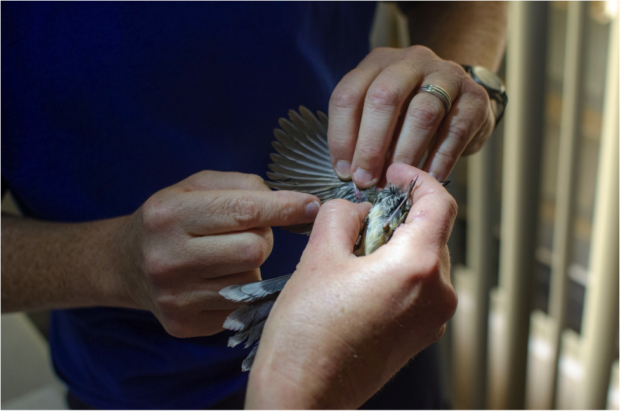
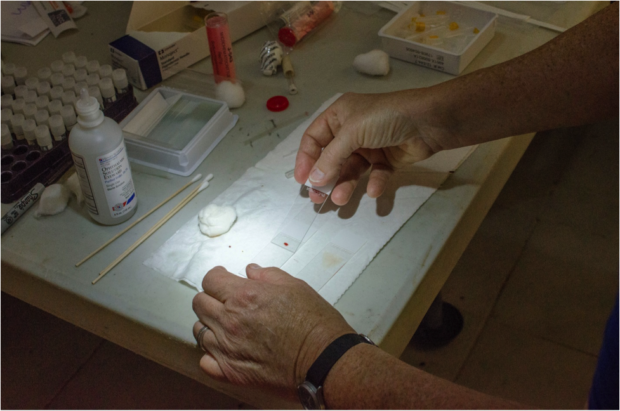
After the blood is collected the bird is given a physical. The vet checks the body condition, sound of its heart and breathing, and checks its eyes to make sure it has no issues with vision. If the bird seems less than the pinnacle of health, the bird is released and not translocated. We want to make sure every bird has the best chance of surviving in its new home.
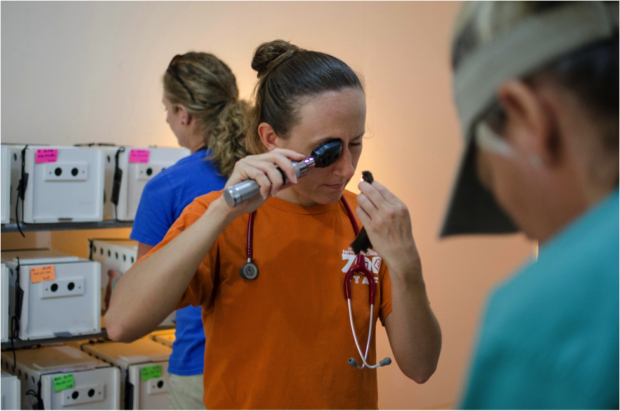
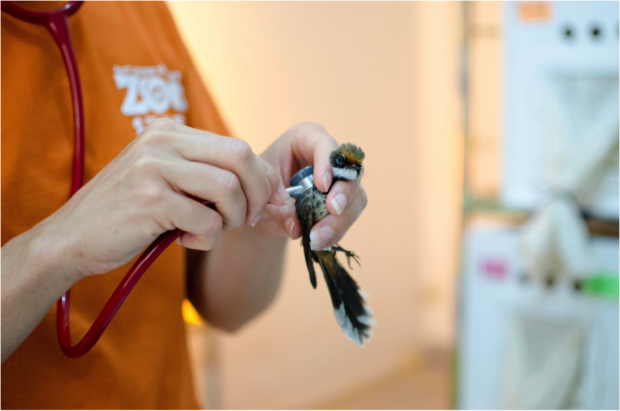
The last thing done during the exam is a feather collection. The feathers are collected so that the gender of the bird can be determined. This is not determined while we are there, but it takes about a week or two for an outside lab to do the work. This information is recorded for future data analysis.
All these things are noted for each individual bird’s records. Note cards are kept with the birds while they are in our care and we write down everything that happens. The birds’ weight, where it was found, diet consumption, bands (identification), and medical notes are all written on these cards.
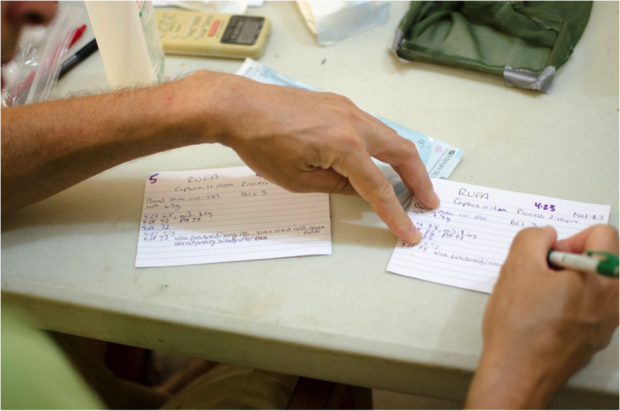
Next time the birds will be prepped for departure and we will watch them sail away towards their new home!
